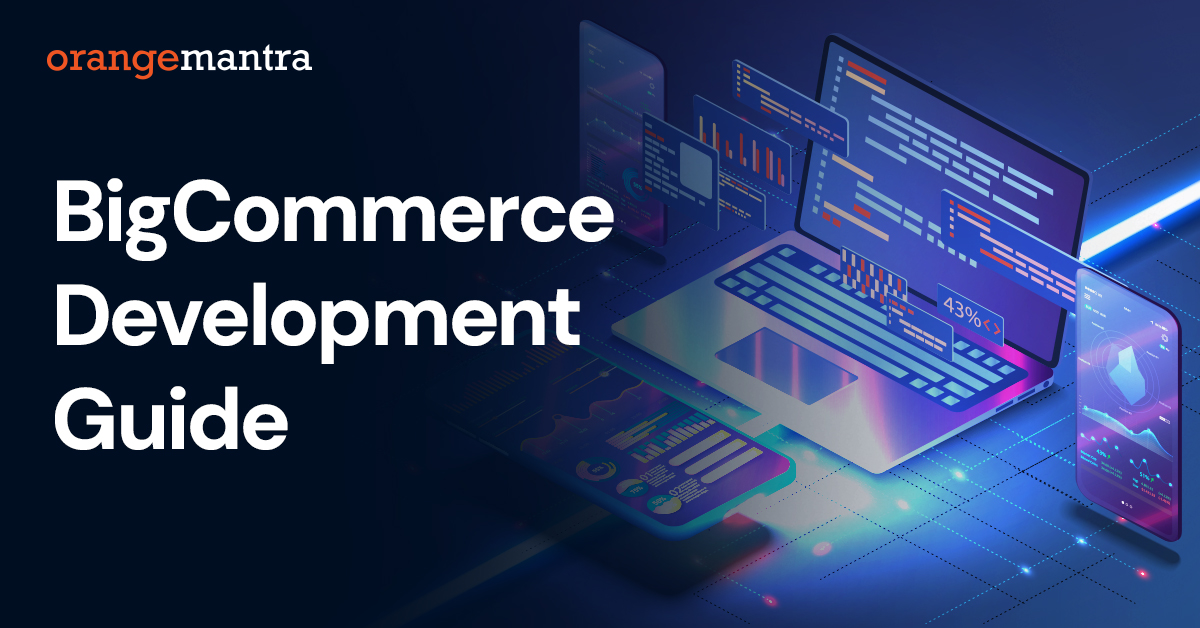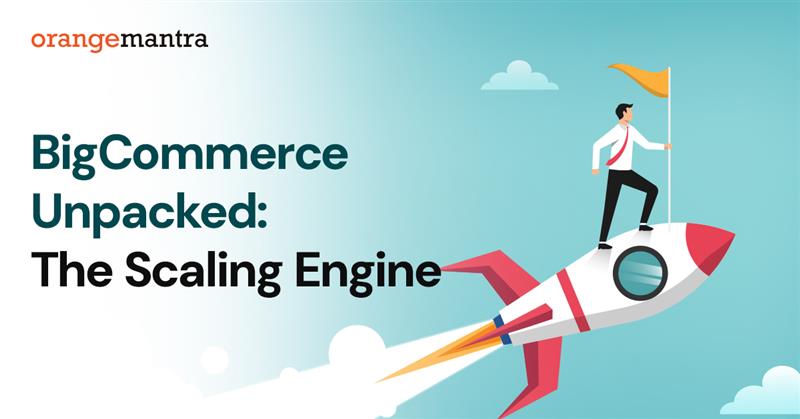
Choose BigCommerce if you’re done paying fees and need B2B tools now. Avoid if you live in Shopify’s theme store. It’s a scaler’s weapon – not a designer’s playground.
Plugin conflicts, checkout errors, vanishing support… If your current platform feels like a part-time tech job, BigCommerce promises an escape. It’s one of the top contenders in the eCommerce arena, often pitched as a feature-rich, flexible, and scalable solution.
But before you jump in, you need to get real with the facts. In this blog, we break down the BigCommerce pros and cons and even touch on the things nobody tells you. This guide breaks down exactly what works, what doesn’t, and what to expect—from pricing model details to occasional service disruptions that could impact your store.
We tested it deeply. Here’s what actually works (and what doesn’t) – from pricing quirks to unexpected downtime.Let’s dive in.
Table of Contents
What is BigCommerce?
Ever feel like your eCommerce platform is working against you instead of with you? Like every new feature you want to add turns into a tech obstacle course? That’s exactly what BigCommerce is built to fix. Built for founders who want more than a basic online store, it gives you the freedom to scale fast. BigCommerce supports growth by offering built-in features like unlimited product listings, multi-channel selling (Amazon, eBay, social), API integrations, flexible B2B tools, and no transaction fees—all on a cloud-hosted infrastructure that scales automatically as your traffic and sales increase.
Built for ambitious brands tired of patchwork solutions. Think:
-
Unlimited products + staff accounts
-
Native multi-channel sales (Amazon, eBay, Instagram)
-
Zero transaction fees (unlike Shopify)
-
Auto-scaling cloud infrastructure
-
B2B tools built-in (bulk pricing, quote management)
Used by Ben & Jerry’s, Skullcandy, and 60,000+ brands.
And yes, it’s trusted by brands like Ben & Jerry’s and Skullcandy, and with big names like these you’re in seriously good company.
BigCommerce Benefits That Will Skyrocket Your Sales
Let’s get straight to the good part. Here are the most practical, profit-friendly advantages BigCommerce brings to the table:
-
Zero Transaction Fees
You read that right! Unlike Shopify, BigCommerce doesn’t take a cut when you use third-party payment gateways.
Business benefit: More revenue.
-
Built-In Features That Replace Dozens of Apps
Eliminate the need for patchwork of plugins and add-ons. BigCommerce offers native support for SEO tools, faceted search, B2B pricing, and abandoned cart recovery.
Business benefit: Lower costs, fewer bugs, and faster performance.
-
B2B-Ready Without the Extra Price Tag
Need to offer bulk pricing, custom quotes, or login-based catalogs? BigCommerce handles that natively; it comes ready with features like bulk pricing, custom quotes, and gated catalogs, and you don’t even have to worry about integrations.
Business benefit: You don’t need a separate platform to handle wholesale.
-
Scalable Infrastructure for Serious Growth
Whether you’re expecting 100 or 100,000 visitors, AI in BigCommerce’s cloud infrastructure scales effortlessly. Whether it’s launch day or Black Friday sale, BigCommerce keeps your store running smoothly, no crashes.
Business benefit: No more downtime during sales or promotions.
-
Multi-Channel Selling Simplified
Connect your store to Amazon, eBay, Walmart, Facebook, and Instagram—and manage it all from your BigCommerce dashboard. Sell across major platforms and manage everything right from your BigCommerce admin panel.
Business benefit: Reach more customers without juggling multiple platforms.
-
SEO-Friendly by Design
BigCommerce gives you full control over URLs, metadata, and robots.txt without needing developer support. It makes it easy to adjust without assistance.
Business benefit: Better rankings = more traffic = more sales.
BigCommerce Product Reviews and Essentials Pricing: Is It Worth It?
Let’s talk BigCommerce pricing so that you get an idea of what to expect.
- Standard Plan: $39/month — Good for startups.
- Plus, Plan: $105/month — Includes customer segmentation and cart recovery.
- Pro Plan: $399/month — For scaling brands with Google Reviews and custom SSL.
- Enterprise: Custom pricing for large operations.
Their essentials pricing model lets you start small and scale as you grow, with no hidden transaction fees. You can collect BigCommerce product reviews natively or integrate apps like Yotpo for advanced review management.
Real Talk: For most growing brands, the Plus or Pro plans hit the sweet spot.
The Cons of BigCommerce (And Where Shopify Wins)
Time for the other side of the story. Here are the real-world downsides of BigCommerce and how shopify website development might do better:
-
Limited Theme Customization
Out of the box, BigCommerce themes feel more rigid compared to Shopify’s massive marketplace and easy drag-and-drop design.
Shopify Advantage: More themes, more design flexibility without developer support.
-
Annual Sales Thresholds
BigCommerce automatically takes you to a higher plan if you cross a certain revenue threshold.
Shopify Edge: Shopify has thresholds too, but their transition process feels less abrupt and more flexible with apps.
-
Fewer Native Apps Compared to Shopify
While BigCommerce packs more native features, its app marketplace is smaller than Shopify’s.
Shopify Advantage: Massive ecosystem = more options for personalization.
-
“Down for Maintenance” Warnings
Though rare, some users report occasional maintenance-related downtime.
Shopify Benefit: More stable across time zones, with fewer unexpected pauses.
Bottom Line: BigCommerce is ideal if you want powerful built-in features. Shopify might be better if you prioritize design freedom and a huge app ecosystem.
BigCommerce vs. Shopify: Quick Comparison
| Feature | BigCommerce | Shopify |
|---|---|---|
| Transaction Fees | None | 0.5–2% fee |
| B2B Tools | Native | Requires Plus ($2K+) |
| Multi-Storefront | Single dashboard | Separate stores |
| Themes/Design | Limited flexibility | Drag-and-drop |
| App Store | 1,200+ apps | 8,000+ apps |
Verdict:
-
BigCommerce = Power & efficiency.
-
Shopify = Flexibility & ease.
BigCommerce Use Cases That Actually Make Sense
BigCommerce really shines in certain scenarios:
-
Scaling a D2C Brand
If you’re selling niche products directly to consumers and need SEO, marketing tools, and low cost per sale—BigCommerce takes the credit here.
-
Wholesale & B2B eCommerce
Custom pricing, account-based shopping, tax exemptions? BigCommerce was built with this in mind.
-
International Storefronts
Run multiple storefronts in different currencies and languages from one backend.
-
Migrating from Magento or WooCommerce
Looking for fewer updates, no servers to maintain, and better support? BigCommerce simplifies your tech stack.
Pro Tip: Use BigCommerce if you’re scaling. Consider Shopify if you’re just starting and want to design speed.
Multi-Storefronts: One Backend vs Many Headaches
BigCommerce lets you run multiple storefronts from one backend—clean, streamlined, and dev-approved. BigCommerce’s native multi-storefront (MSF) capability allows multiple storefronts to run on a single backend Role-based access, shared inventory, and custom pricing? All built in.
Shopify Plus? It makes you manage each storefront like its own kingdom—separate logins, separate checkouts, and double (or triple) the dev work. You’ll need APIs or third-party tools just to sync the basics.
In short: BigCommerce is multi-storefront done right. Shopify Plus makes you juggle.
So, Is BigCommerce Right for You?
Ask yourself:
- Do you want built-in features instead of stitching together 10+ apps?
- Are you selling across channels or borders?
- Do you need a solution that’s B2B and B2C friendly?
If the answer is yes, BigCommerce is built for you. But if you’re just starting and need lots of visual freedom, Shopify might be the smoother ride.
BigCommerce in Action: Real-World Impact
One of our clients in the D2C apparel space used BigCommerce’s built-in cart recovery feature and saw a 30% drop in checkout abandonment within the first quarter of implementation. The built-in analytics helped them identify bottlenecks in the funnel, and since BigCommerce doesn’t charge extra for this functionality, it kept their tech stack lean and cost-efficient.
Our Experience with BigCommerce Migrations
At OrangeMantra, we successfully migrated three fashion and beauty brands from WooCommerce to BigCommerce in early 2024. The result? Page load speed improved by 45%, and overall performance benchmarks doubled within the first two months post-launch. This migration was powered by BigCommerce’s open API structure, which gave us flexibility in customizing headless frontends while keeping core commerce stable.
Ready to Build a Smarter BigCommerce Store?
Whether you’re a scaling brand or a B2B giant going digital, our BigCommerce development services are designed to:
- Build custom storefronts
- Integrate seamlessly with your ERP/CRM systems
- Accelerate your launch with tailored solutions
- Enhance your SEO and overall performance
Ready to Build a Smarter with BigCommerce?
From scaling a brand or a B2B giant going digital, our BigCommerce development services are designed to:
- Build custom storefronts
- Integrate with your ERP/CRM
- Launch faster with tailored solutions
- Optimize for SEO and performance
Let’s talk BigCommerce.
Book a free consultation with our experts and find out how to turn your eCommerce store development into a conversion machine.
BigCommerce Pros and Cons Recap
| Pros | Cons |
| No transaction fees | Theme flexibility is limited |
| Built-in B2B tools | Auto plan upgrade at revenue caps |
| SEO-friendly | Smaller app marketplace |
| Scalable infrastructure | Occasional downtime reports |
| Multichannel selling | Fewer theme options |
BigCommerce benefits businesses ready to scale and go omnichannel. Just know your goals—and pick the platform that grows with you.
Final Verdict: Is BigCommerce the Right Fit for You?
If you’re looking to grow, sell across channels, and skip the headache of managing 10 different plugins, then let’s say BigCommerce has got your back. Since it is built for scaling brands, B2B businesses, and anyone who wants serious performance without the tech chaos.
But if design freedom or a massive app marketplace is at the top of your wish list, Shopify might suit you better (at least for now).
FAQs
Q1. Which is better, Shopify or BigCommerce?
Depends on what you need. You can choose Shopify as it wins design and ease, whereas BigCommerce wins when it comes to built-in features and no transaction fees. It’s Coke vs. Pepsi, but for eCommerce.
Q2. Does BigCommerce work in India?
Yes, and quite well. It supports INR, local payment gateways(Razorpay, Paytm), and is fully functional for Indian merchants looking to sell globally.
Q3. Is BigCommerce better than WooCommerce?
If you want fewer plugins and more built-in power, go for BigCommerce. Anything that you need is already here. But WooCommerce is great, although you must be prepared to play plugins. One wrong update, and your whole stack will be pointless.





